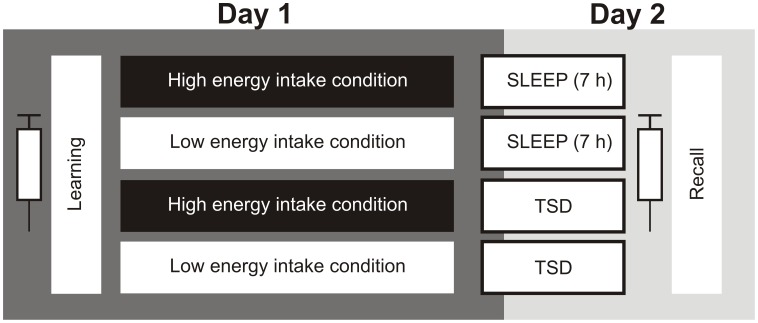Figure 1. Experimental protocol.
According to a randomized, balanced cross-over design, each subject participated in four experimental conditions: high caloric intake followed by regular sleep, low caloric intake followed by regular sleep, high caloric intake followed by total sleep deprivation (TSD), and low caloric intake followed by total sleep deprivation. After an overnight fast, in the morning of day 1, subjects had to learn both a declarative (word pair associates) and procedural memory task (finger sequence tapping) at 0800 h. Thereafter, they were provided with three meals (0900 h, 1300 h, 1900 h) and three additional drinks (1030 h, 1500 h; 1700 h), equaling ∼ 50% of their estimated individual total energy expenditure ( = low energy intake conditions). In the high caloric intake conditions, the energy content of all meals and drinks provided were increased by means of maltodextrin (taste- and odorless carbohydrate), corresponding to ∼ 150% of the estimated individual total energy expenditure. In half of the conditions, in the subsequent night sleep was permitted from 2300 h (lights off) to 0600 h (lights on); in the other conditions, subjects remained awake throughout the whole experimental period. In the morning of day 2, i.e., after a post-treatment consolidation interval of 26 hours, recall of word pairs and procedural skill performance was tested. Syringe symbols denote blood samplings for the determination of plasma glucose.

